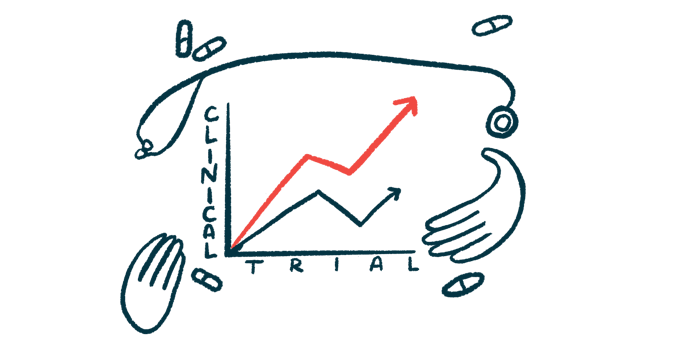GTX-102 may help cognition in Angelman syndrome children, teens
Patients also saw gains in communication, motor function, sleep, behavior
Written by |

GTX-102, Ultragenyx’s investigational gene therapy for Angelman syndrome, improved cognition for participants in a Phase 1/2 trial after up to three years of treatment.
Most patients also saw clinically meaningful improvements in one or more key areas, including communication, motor function, sleep, and behavior.
The data support starting the pivotal Phase 3 Aspire trial (NCT06617429), which is designed to assess GTX-102’s efficacy and is set to enroll participants by the end of the year.
The Phase 1/2 KIK-AS trial (NCT04259281) is assessing the safety and tolerability of multiple doses of GTX-102 in 74 children and adolescents, ages 4-17, at sites in the U.S. and around the world. The new data was presented at the 2024 Foundation for Angelman Syndrome Therapeutics (FAST) Global Science Summit last month in Orlando, Florida.
“We are on track to begin enrolling the Phase 3 Aspire study by the end of this year and have a robust and experienced global network of sites that will enable accelerated study execution,” Eric Crombez, MD, chief medical officer at Ultragenyx, said in a press release.
Angelman syndrome is caused by the absence or malfunction of the UBE3A gene. Everyone inherits two copies of the gene, one from each parent, though the copy from the father is normally inactive, particularly in certain brain regions. The disease develops when the copy inherited from the mother is mutated or missing.
What is GTX-102?
GTX-102 is an antisense oligonucleotide, called UBE3A antisense transcript, or UBE3A-AS, that’s designed to reactivate the paternal UBE3A gene copy. It’s a short snippet of genetic material that blocks the molecule that keeps the paternal copy of the UBE3A gene from being active in cells. The treatment is administered via injection into the spinal canal.
KIK-AS enrolled patients in whom the maternal UBE3A gene is missing entirely, which is usually associated with more severe forms of Angelman. The trial’s main goal is to assess the safety and tolerability of multiple ascending doses of GTX-102.
According to the September data analysis, patients treated with GTX-102 for a year had a mean increase of 6.7 points in their Bayley-4 Cognition Growth Scale Value (GSV) scores, which is considered a clinically significant change. This improvement was even more pronounced using Aspire’s primary measure of cognition, the Bayley-4 Cognition Raw score, which resulted in a 10.9-point increase.
Data from 28 patients was also assessed using the Multi-domain Responder Index (MDRI), an assessment approach to measure cognition, communication, motor function, sleep, and behavior, and the Phase 3 trial’s secondary goal. The results showed a significant response of 2 points, indicating that about 80% of patients achieved clinically meaningful improvements in at least one MDRI domain.
The treatment had an acceptable safety profile, with no unexpected serious adverse events. Few patients developed transient lower extremities weakness considered related to the treatment, but these resolved rapidly and patients remained in the study.
“Cognition is the building block for the development and ascertainment of many new skills across a range of the domains we have evaluated in the Phase 1/2 study,” Crombez said. “The data presented at FAST reinforce that the Aspire Phase 3 primary endpoint of cognition, as measured by Bayley-4, appears very well powered to show statistically significant separation between the GTX-102 and sham arms.”
Aspire is expected to enroll 120 patients, ages 4-17, with a full maternal deletion of the UBE3A gene and who can walk independently or with an assistive device. The participants will be randomly assigned to receive either GTX-102 or a placebo, for about a year. Dosing will start at a low dose every four weeks and, as the dose increases, dosing intervals will increase to eight weeks, or about two months, and then to 12 weeks (about three months).
The patients may roll over into an extension part of the study where all will receive the treatment for another year. The study is expected to be completed in 2027.



